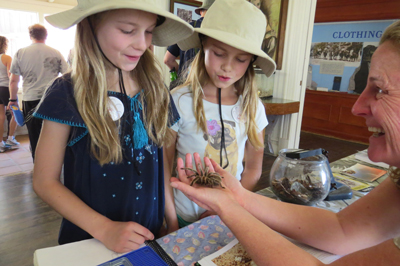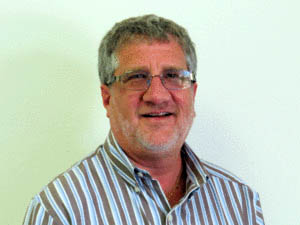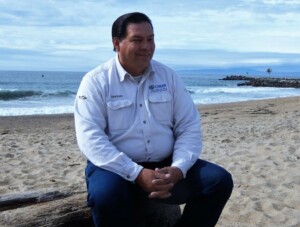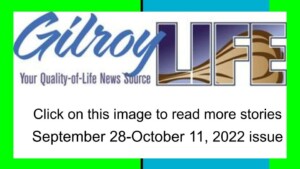Around Town … with Robert Airoldi: Henry W. Coe State Park’s famous Tarantula Fest is back for family fun
If you wish to buy a lunch, pre-purchase it online at www.coepark.net
![]()

Morgan Hill Life file photo Sophia Johnson and Ava Johnson, both of Oakwood School, check out a tarantula at a Coe Park Tarantula Fest several years ago. This year’s event is Oct. 1.
By Robert Airoldi

Robert Airoldi
The annual free family-friendly Tarantula Fest makes its return (after COVID) from 10 a.m. to 3 p.m. Saturday, Oct. 1, at Henry W. Coe State Park.
Kids can view birds of prey and other local wildlife presented by the Wildlife Education and Rehabilitation Center — and, of course, tarantulas and other spiders on display. They can learn about snakes and even hold one if they wish.
Guided hikes into the wild with volunteers will search for tarantulas, which are now in the breeding season. There will be plenty of other nature-focused fun activities for youngsters.
“This event is a great opportunity for kids and families to learn about the diversity of animals that call Coe Park home,” said co-organizer Chere Bargar.
Festival co-organizer Ginny Rhodes gets a kick when she kids see a tarantula or a snake and squeal out loud.
“For a lot of families who come up for this festival, it’s the first time they’ve ever been up there,” she said “And they don’t realize until they get up there how beautiful the park is – it’s breathtaking. It’s fun to see people experiencing the park for the first time in a fun setting.”
The event is free but there is a parking fee of $8. Parking is limited so carpool if you can. If you wish to buy a lunch, pre-purchase it online at www.coepark.net.
Coe Park has more than 87,000 acres of wilderness, and the Tarantula Festival is fun way to get an introduction to all it offers — including the creepy-crawlies.

Herman Garcia
 Herman Garcia and his crew of volunteers’ mission to clean up the watershed and save steelhead trout is well-chronicled locally. But now, the story of Gilroy-based Coastal Habitat Education and Environmental Restoration is going national.
Herman Garcia and his crew of volunteers’ mission to clean up the watershed and save steelhead trout is well-chronicled locally. But now, the story of Gilroy-based Coastal Habitat Education and Environmental Restoration is going national.
A crew from the National Oceanic and Atmospheric Administration’s Fisheries division visited Gilroy Aug. 22 to film Garcia, one of the state’s most outspoken advocates for watershed reclamation and fish recovery.
Charlotte Ambrose, NOAA Fisheries’ California programs coordinator, said the project is an initiative to highlight stories of people and organizations across California, Washington, Oregon and Idaho who are working to save these fish from extinction.
“If not for Herman and CHEER, we wouldn’t have steelhead in Gilroy,” she said.
Since 2006, CHEER has worked to reclaim and restore watersheds decimated by toxins and pollution, cleaning up more than 1,300 square miles from Morgan Hill down into San Benito County and Watsonville, taking on the challenge of removing garbage from the rivers and creeks before it makes its way into the Monterey Bay.
Garcia said the group has no problem clearing out thousands of pounds of garbage daily from the watershed, and since it began, CHEER has removed 60 vehicles, five boats and two motorcycles from waterways. The interviews, once all are completed, will be posted on NOAA Fisheries’ website for viewing.
 Mount Madonna School has recently been accepted as a member of the Global Schools Program, a network of schools from around the world committed to education for sustainability and the Sustainable Development Goals. This educational network allows MMS to share its vision and programming with other schools around the world.
Mount Madonna School has recently been accepted as a member of the Global Schools Program, a network of schools from around the world committed to education for sustainability and the Sustainable Development Goals. This educational network allows MMS to share its vision and programming with other schools around the world.
Global Schools’ mission is simple: provide the necessary tools and e-resources for schools and teachers to educate their students on the SDGs. In working with educators, the program aims to transform learning environments globally and make schools the hubs of education and leadership on the SDGs, ultimately empowering students to prioritize sustainable development in their lifestyles, behaviors, education and professional careers.
The Sustainable Development Goals are a collection of 17 interlinked global goals designed to be a “shared blueprint for peace and prosperity for people and the planet, now and into the future.” The SDGs were set up in 2015 by the United Nations General Assembly and are intended to be achieved by 2030.
